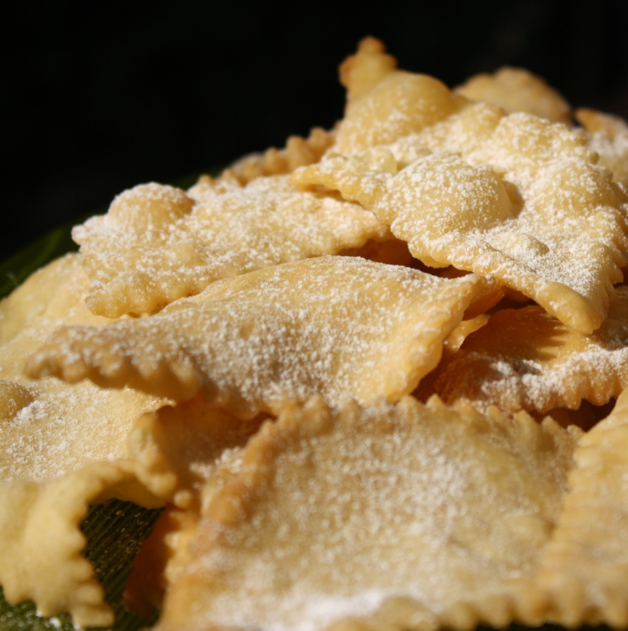Bugie di Carnevale
Bugie di Carnevale
Carnevale in Italy is a month long public festival with more partying towards the end of February.
Lent is book ended by Carnevale and Pasquetta(little Easter, always the day after Easter, big, all day, outdoor BBQ with lots of wine!), two big parties of eating rich foods and drinking.
One of these rich foods is Bugie di Carnevale, a fried pastry sprinkled with sugar.
It is literally everywhere during the month of February.
This is a recipe we got from our neighbor Pina. For the past 2 years I have made these with her during Carnevale.
Definition of Carnevale in Wikipedia
The Lenten period of the Liturgical year Church calendar, being the six weeks directly before Easter, was marked by fasting and other pious or penetential practices. Traditionally during Lent, no parties or other celebrations were held, and people refrained from eating rich foods, such as meat, dairy, fats and sugar. The forty days of Lent, recalling the biblical account of the forty days that Jesus spent in the wilderness, serve to mark an annual time of turning. In the days before Lent, all rich food and drink had to be disposed of. The consumption of this, in a giant party that involved the whole community, is thought to be the origin of Carnival.
Carnival is a festive season which occurs immediately before Lent; the main events are usually during February. Carnival typically involves a public celebration or parade combining some elements of a circus, mask and public street party. People often dress up ormasquerade during the celebrations, which mark an overturning of daily life.
Bugie di Carnevale
Ingredients
(serves 6)
500 g. flour
50 g. sugar
50 g. butter, melted
1 egg and 1 egg yolk
a little dash of dry white wine of good quality (2-3 T.)
grated zest of one lemon
1 teaspoon baking powder
1 T. vegetable oil
1 tsp salt
Vegetable oil for frying (free of impurities with a neutral taste)
Preparation
Mix the flour with the egg, egg yolk and melted butter that is slightly cooled, sugar, baking powder,lemon zest, salt, oil and white wine as needed to obtain a firm but elastic dough. Cover in plastic wrap and let rest for 1/2 hour.
Put through a pasta machine, biggest setting first, then smaller until you have a thickness of 2 / 3 mm.
(This can also be done with a rolling pin by hand)
Cut the dough into different shapes (normally diamonds) using a rolling cutting wheel or knife.
Fry the Bugie in very hot oil or lard in a high sided pan so that fat can have a good depth.
Fry a few at a time, until they turn lightly golden.
Spoon out with a slotted spoon and put them on a tray with paper towels to drain the fat.
When the Bugie are cool, sprinkle with powdered sugar and enjoy it.